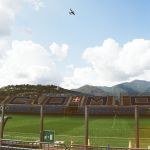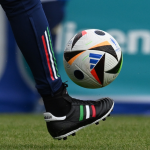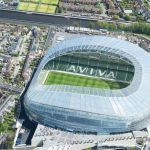
National teams playing in one single stadium
United Kingdom, France, but also the stadium where the last Europa League Final was played
June 12th, 2023
The national team season almost always has an itinerant character, with the selections being hosted from facility to facility during their friendly and qualifying engagements for international tournaments. This is also the case for the Italian national team, which, despite having the Stadio Olimpico in Rome as its main venue, travels to different stadiums, with the positive result that more fans can see the matches live. There are, however, some federations that have decided to establish a single stadium as the home of their national team, in some situations for the exclusive use of the team representing the country and in others in cohabitation with the club of that specific city. This choice is widespread in the British nations, but around the world there are several facilities that have become the exclusive home of national teams over the years.
Wembley, the home of England
Wembley Stadium is one of the most impressive stadiums in the world, with its arch visible for miles around. The 'Cathedral of Football', as Pelé called the facility, can seat up to 90,000 spectators and is therefore the largest stadium in the UK and the second largest in Europe after Barcelona's Camp Nou. It is currently owned by the English Football Association, which has made it the home of the Three Lions; it is exclusively here that the team plays its home games. The FA Cup and English League Cup finals are also played at Wembley.
Eire and Northern Ireland
As with England, the national teams of Eire and Northern Ireland also play their respective home matches in one stadium. Until the mid-2000s, the Republic of Ireland played at the historic Lansdowne Road, which was later demolished because it was deemed too outdated. In the same spot now stands the Aviva Stadium, named after the insurance company of the same name that owns the named directors. When Eire takes the field, the stadium changes its name to Dublin Arena, due to UEFA's ban on the naming of stadiums after non-Eire-related sponsors. It is a state-of-the-art facility and can accommodate almost 52,000 spectators.
Northern Ireland, on the other hand, plays its home matches at Windsor Park, located in the capital Belfast. It is a less modern facility than that of its Republican cousins, can only seat 18,500 spectators and was opened back in 1905, only to be expanded in 2016. In addition to the Northern Ireland national team, the semi-professional club Linfield F.C. also play at Windsor Park and the Irish Cup final is held there.
Scotland and Galles
The Scottish national team plays its home matches in Glasgow's beautiful Hampden Park, the stadium where Celtic also plays. Opened in 1903, it has also hosted three Champions League finals in the course of its history. For a long time Hampden Park was one of the world's most spacious venues, with an impressive 150,000 seats, but over time it had to be reduced for safety reasons, to the current 52,000. Since 2020 it has been owned by the Scottish Football Association.
A very modern stadium instead for Wales, who take the field at the Cardiff City Stadium, opened in 2009. Created from the ashes of the obsolete Ninian Park, it has a seating capacity of 33,000. The only major event hosted is the 2014 UEFA Super Cup final won by Real Madrid 2-0 against Sevilla.
The Stade de France
The French national team, vice-World Champions, takes the field at the Stade de France, located in the Saint-Denis district. It was built for the 1998 World Cup, an event during which it hosted the final, which was won by the host Gaullets. It is one of the largest stadiums in Europe with 81,000 seats, and can also boast a record: it is in fact the only stadium, together with the International Stadium Yokohama, to have hosted both the football and rugby World Cup finals. The consortium owning the Stade de France has put it up for sale for 2025, PSG is interested in buying it, in the meantime it will host the athletics competitions of the 2024 Paris Olympics.
Belgium and the King Baudouin Stadium
Belgium plays its home matches at the King Baudouin Stadium, which many may remember as the Heysel Stadium; the stadium where 39 Juventus fans lost their lives in 1985 before the Champions Cup final against Liverpool when a wall separating the fans collapsed. In 1995 it was completely renovated and named after King Baudouin, whose father King Leopold had attended the opening ceremony back in 1930. Since then it has become the stadium of the Belgian national team and with its capacity of 50,000 spectators it is the largest stadium in the country.
The Puskas Arena in Budapest
The Puskas Arena, opened in 2019 after two years of construction following the demolition of the old Ferenc Puskas Stadium, hosts Hungary's home matches. In 2014 Budapest was chosen as the city to host three EURO 2020 matches and the then-president of the Hungarian Football Association Sándor Csányi pushed to put up a state-of-the-art facility. The Puskas Arena is now a jewel of architecture and can accommodate almost 70,000 spectators.
The stadiums of the Scandinavian national teams
Over the years, the national teams of the Scandinavian peninsula have experienced strong growth along with their respective football movements. All Scandinavian national teams play their matches in a specific stadium. The largest in Scandinavia, with 50,000 seats, is the Friends Arena in Solna, where Sweden plays. It is a newly built facility with construction started in 2009 and finished in 2012. It has a retractable roof, but the real special features are two: the façade can be illuminated in 17 million different combinations of yellow and blue when the Swedish national team is playing, and in the middle of the roof is a 240-square-meter multimedia cube capable of showing live images of the scheduled event.
The second largest stadium on the peninsula is the Helsinki Olympic Stadium, in which Finland plays and which can seat up to 40,000 people. It was opened in 1938, but underwent several renovations between 2016 and 2020. The hallmark of the facility is a large tower in the middle of the stands 72.71 metres high, which is the length of the throw with which Finnish athlete Matti Jarvinen won gold in the javelin throw at the 1932 Los Angeles Olympics. The tower is open to visitors and at its highest point offers an impressive view of Helsinki.
Since 1992, the year it was inaugurated, Denmark has played its matches at the Parken Stadion in Copenhagen; also the home football team's venue. It has a capacity of 38,000 spectators and hosted that year's Eurovision Song Contest in 2001. And it was at that event that the retractable roof was installed. The Ullevaal Stadion in Oslo, on the other hand, is exclusively for the use of the Norwegian national team. This stadium was erected back in 1926 but has seen various renovations over the years. It can accommodate around 26,000 spectators and has been owned by the Norwegian Football Association since 2007.
The smallest stadium in Europe is instead the Laugardalsvollur in Reykjavík where Iceland plays. In 1958 the facility had only one stand, in 1997 the opposite stand was added, and in 2006 it was completely refurbished following the Icelandic government's commitment to enhance the national football movement. It now has a seating capacity of 9,800, but can reach 15,000 if standing room is counted. A number far exceeded during a friendly against Italy in 2004, when there were 20,204 fans, many of them standing.















































